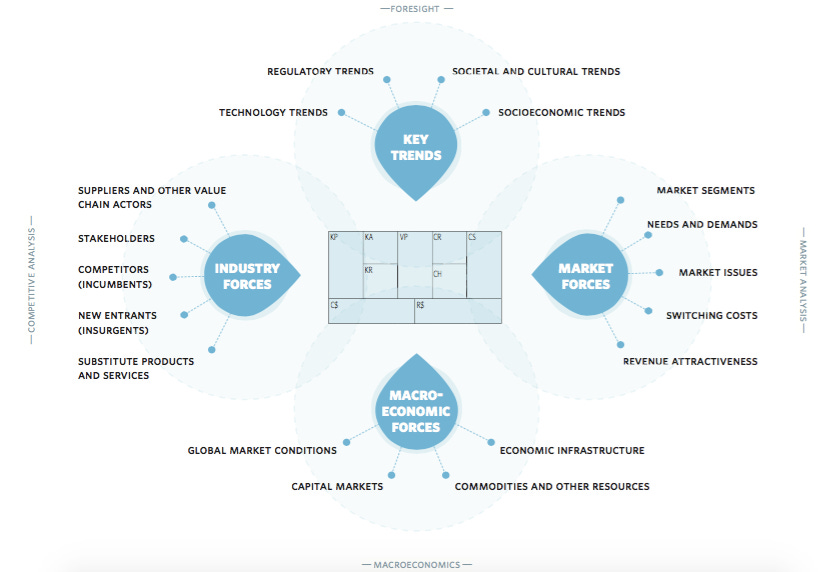In this week’s newsletter we will talk about some techniques that I find useful to analyse and understand your business in order to inform your IT Strategy.
Whilst it is essential to understand both your business and the context it operates in, it is important to ‘right-size’ your analysis of the business to the time and resource you have available, this area can be a rabbithole to get lost down and you need to be realistic with yourself about the potential diminishing returns of a deep dive into this analysis and also the limits of your skills. Two important questions to ask up front are:
- Has this analysis already been done in some form elsewhere? e.g. as part of analysis for the business strategy/plan or as part of analysis around acquisitions?
- Can you pull on other resource/skillsets to augment your strategy creation effort?
In this post we’ll assume the answer to both questions is no and talk about some simple techniques that will enable you to both gain a better understanding of the business and its context and help provide insight with which to create a great IT Strategy.
Business Model Canvas
The Business Model Canvas Is a really simple model to communicate and use, it’s conceptual without being academic and prompts basic but powerful questions about your business, so it is a great starting point on your analysis journey.
Business Model Environment analysis
The Business Model Canvas is great, but it provides a mainly inward look at an organisation. It is important to spend time exploring the external factors that mold and influence your business. There are various similar and overlapping techniques that you can use to support your thinking in this area e.g. Porter’s 5 Forces, PESTLE etc. In my view they all do a similar job, its just worth picking one and making yourself comfortable with using it through repetition. I’ve found the Business Model Environment analysis tool is useful in helping contextualise the Business Model Canvas.

As it helps us think about Market Forces, Key Trends, Industry Forces and Macroeconomic Forces.
Value Propositions and Streams
Once you’ve thought about the business and its context i find it useful to focus on the central section of the business model canvas and think about the key value propositions of the business. I find the Value Proposition Canvas can be a useful tool to help you think about your key value propositions.
Once you are clear on those it’s worth doing an exercise around Value Stream mapping to provide a high level view of the key steps in each value stream that delivers the key value propositions of the business.
Capability Model
At this stage you can start an initial stab at thinking about the business capabilities that are required to deliver the Value Streams. This is useful because technology is likely to underpin each of the business capabilities that helps deliver the value streams so should be considered as you are developing your IT Strategy.
Wardley Maps
Simon Wardley has done a great job of explaining the value and how to use Wardley maps here. having thought about Value propositions, value streams, and capabilities, you can use Wardley maps to map out your thinking and use it to inform your strategic thinking e.g. By placing components/capabilities on the X axis you can start to see not only where components are, but where they could be and what opportunities that may present for your IT Strategy, maybe there are capabilities that support your value stream that are bespoke but could be moved over time to commodity. A classic example from an IT Strategy perspective a few years ago would have been on-prem vs cloud compute resource.
Summary
In this newsletter we’ve covered some techniques that you can use to analyse your business to help inform your IT Strategy. These techniques area pragmatic toolkit, it’s not an exhaustive MBA-level analysis, it is a means to an end, it’s a series of tools that when used together take you on a journey of thinking about your business in order to help you deliver a better, more informed IT Strategy. Investing time in understanding the business, its context, its value propositions, value streams and business capabilities will give you a greater chance of delivering an IT Strategy that meets your business needs.
